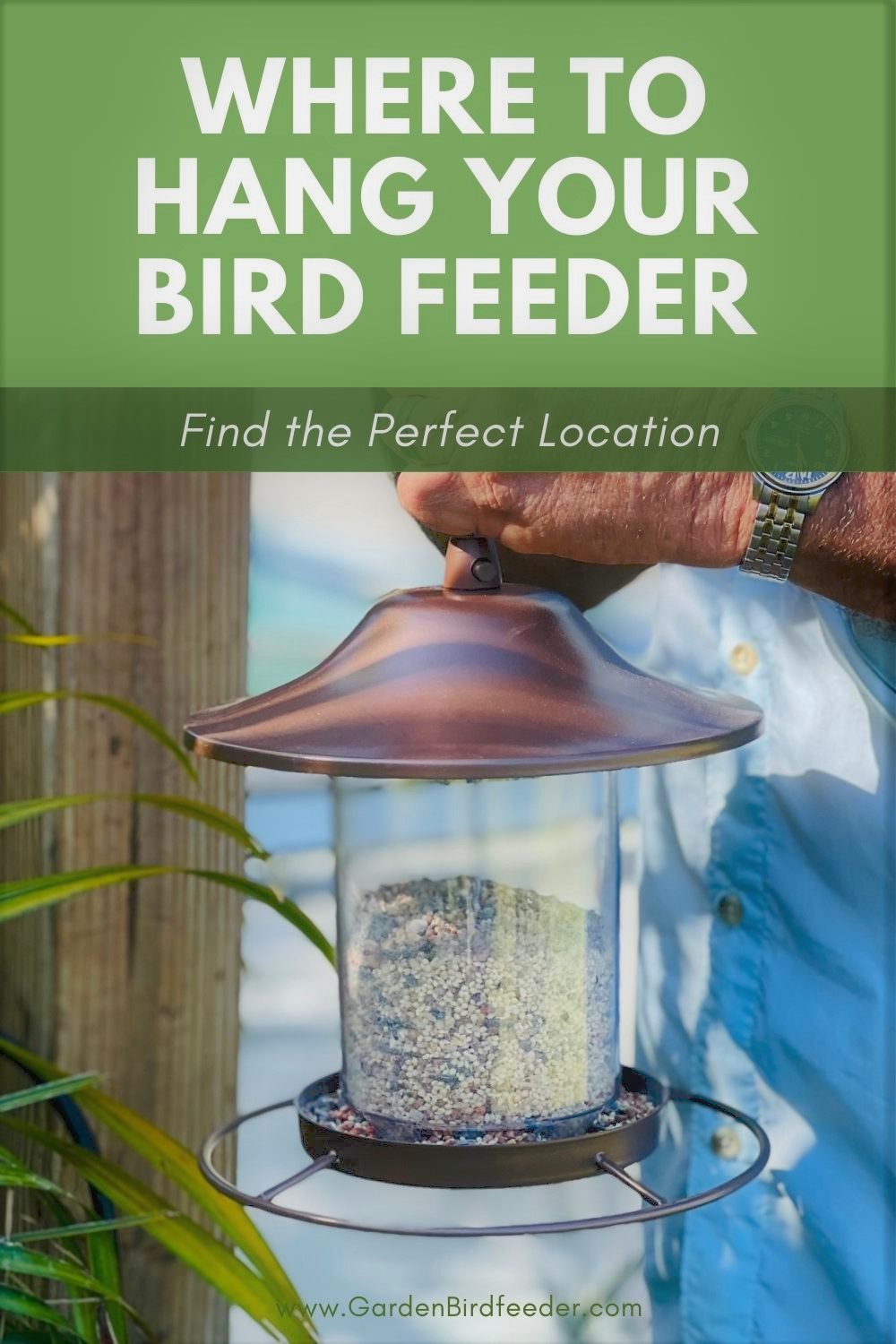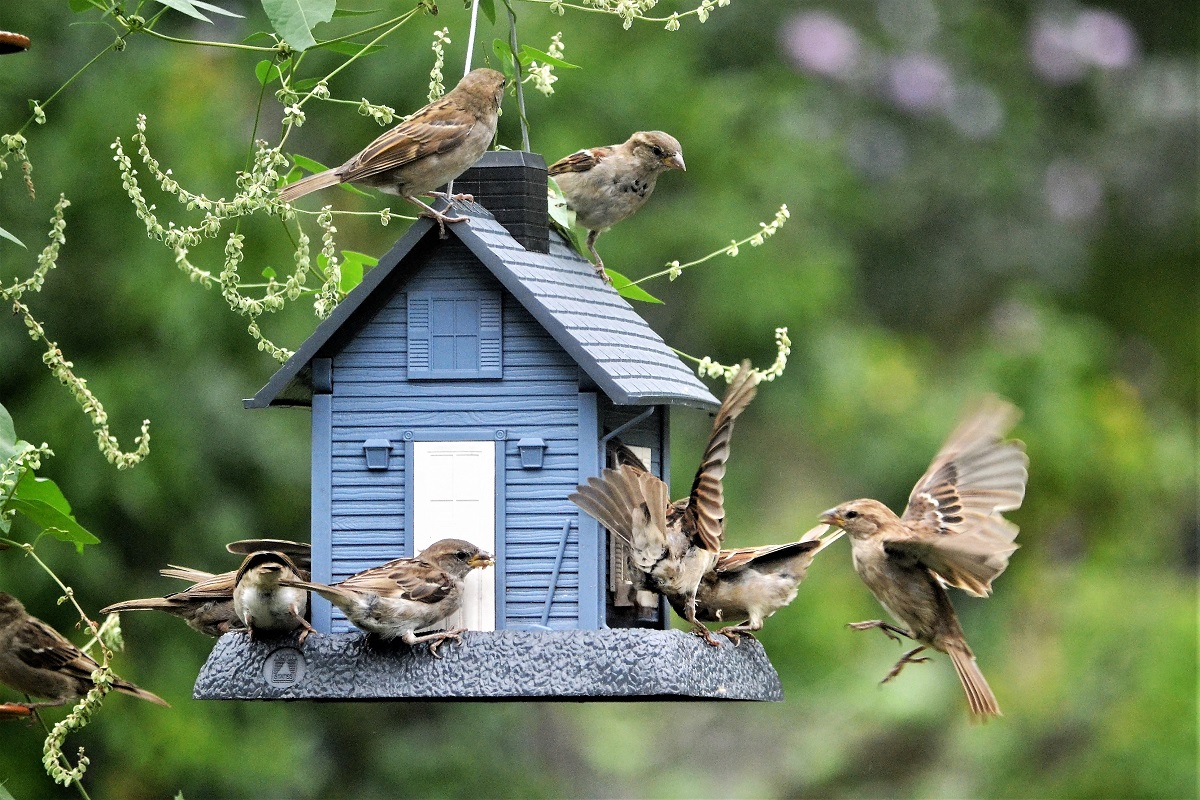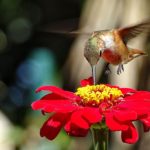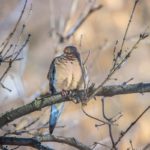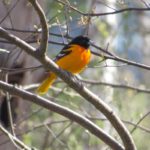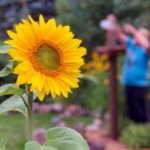Where is the best location for a bird feeder? If you are getting ready to hang a bird feeder in your yard, you will need to put some careful thought into where to put it.
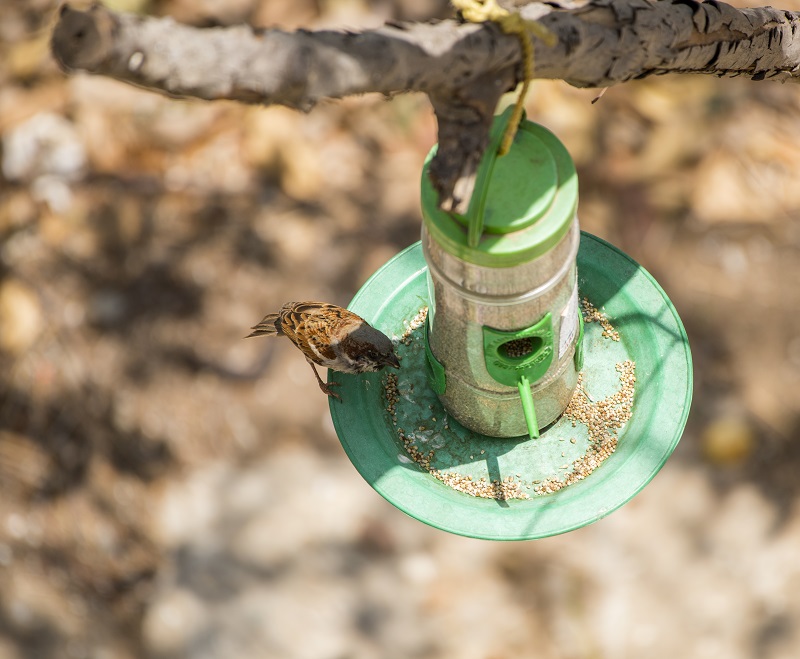
In this guide, we will discuss various considerations such as sun vs. shade, proximity to windows, wind, shelter, and more.
Why is the Location of the Bird Feeder Important?
The location where you place a bird feeder is important for a number of reasons. First of all, some spots are safer and more attractive to birds than others. You also need to think about keeping the area around a bird feeder clean as well as protecting your plants.
While weighing these practical considerations, you also will want to think about aesthetics and visibility. It is nice to be able to watch your birds eating, after all.
Do Birds Like Feeders in Sun or Shade?
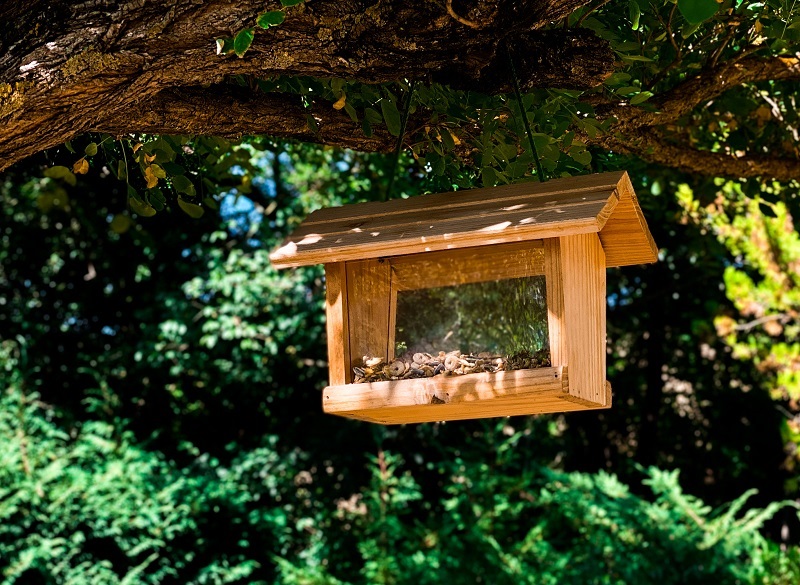
Should you hang your bird feeder in the bright sun or keep it in a shady location? That depends.
Most bird feeders should be fine in full sun. The birds may even appreciate it since they can spot it quickly when flying overhead. They also may find it easier to monitor their surroundings while they eat in the sun.
But if you are feeding hummingbirds, keep their feeder in the shade if possible. Why? The nectar spoils quickly in the sun. That isn’t good for the birds or your budget.
Wind and Shelter
Think how difficult it can be to enjoy eating outdoors on a windy day. That is true not only for you but for the birds that frequent your lawn and garden as well.
Ideally, you should place your bird feeder in a location where it is sheltered from heavy gusts of wind. The birds will have an easier time eating, and your feeder is less likely to fall.
Proximity to Bushes, Trees, and Flowers
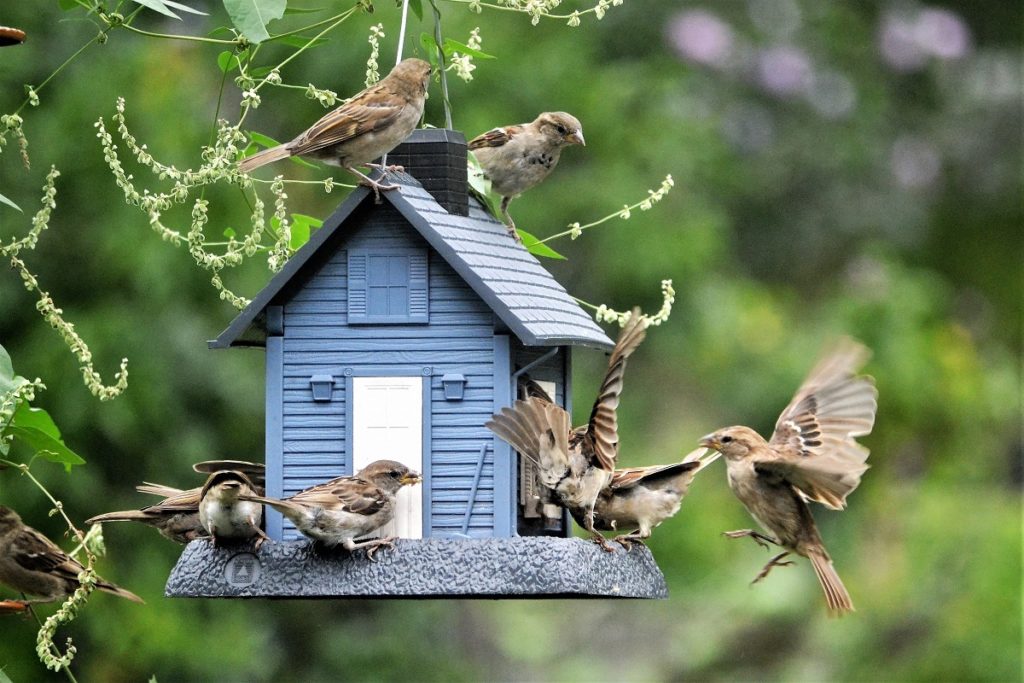
Oregon State University explains that it can be useful to have trees and shrubs close to a bird feeder. Birds want to be able to hide from predators in a hurry if they have to, and shrubs and trees can provide them with cover.
That being said, watch out for the allelopathic effects of birdseed, which inhibit other plants from growing.
Certain types of plants are resistant to those effects and can thrive underneath your birdfeeder. Some examples include fairy roses and mint. But other plants may die or refuse to grow if there is a lot of birdseed debris on the ground. See Bird Feeder Landscaping Ideas for some workarounds.
Safety from Household Pets
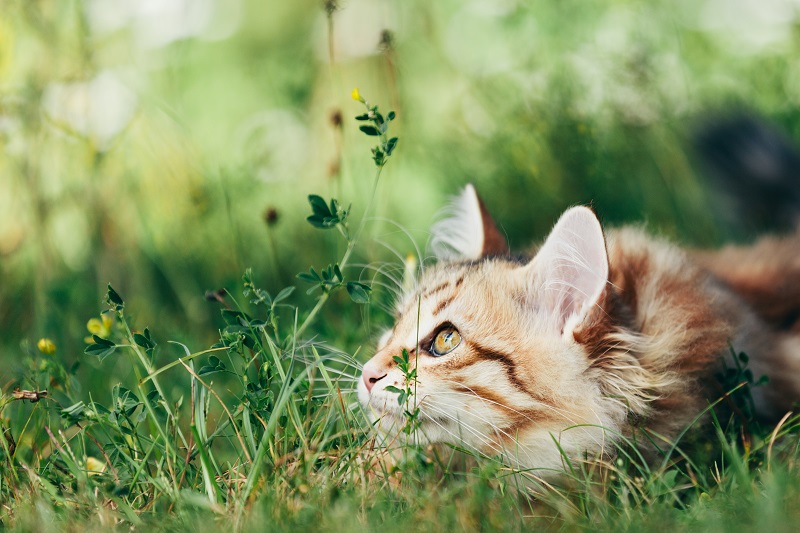
Do not ground feed if you have cats. If possible, use a pole to hang the bird feeder where cats will have the hardest time reaching it. Incorporating a baffle into the setup may help.
This is a situation where you might want to consider placing a little more distance between your bird feeder and shrubs than you might otherwise. While shrubs are a good cover for birds, they are also an excellent hiding place for cats. As the cats may have the greater advantage, more open space could be safer for the birds.
A good middle ground is around 10 feet of space between shrubs and bird feeders. This is close enough to be convenient for birds but is unlikely to put them in immediate danger from predators.
Placing Ground Feeders
A sheltered spot close to shrubs and trees is ideal for a ground feeding station. However, you might want to regularly change where you feed birds on the ground. Doing so may help keep plants healthier (once again, you are trying to avoid problems due to allelopathic toxins in seeds).
Alternatively, you could have a dedicated spot free of plants and easy to clean and maintain.
How Far Away from the House Should a Bird Feeder Be?
Another question you probably have is how many feet should separate the bird feeder from your house. The answer depends on the specifics of your situation.
If you are concerned that predators hunting the birds or pests that might be attracted to the birdseed could invade your home, you are going to need to put the bird feeder some distance away from your abode. Around 50 to 60 feet is generally suitable.
If that is not as significant a concern, it might be okay to put your birdfeeder close to your home. See the section below for more details.
Is it Okay for Bird Feeders to Be Near a Window?
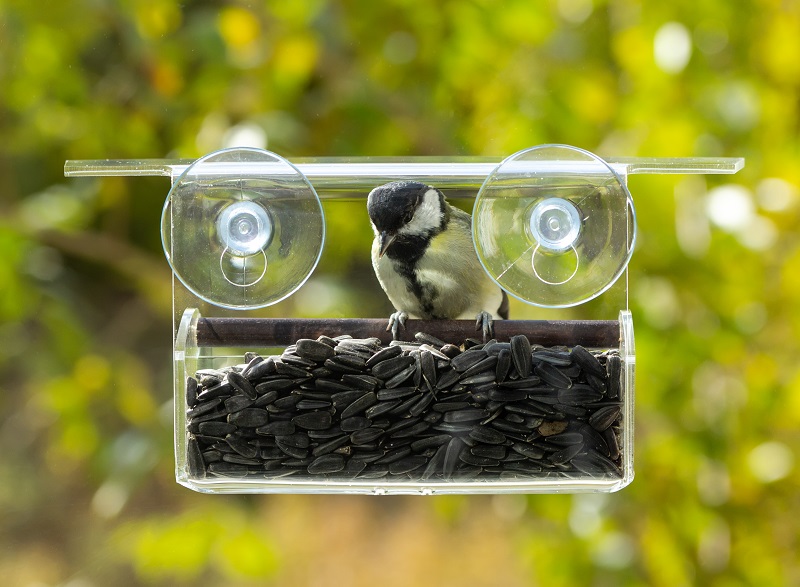
You are probably aware that birds have a tendency to fly right into windows. They mistake the reflections as an extension of the outdoor world. If they strike a window hard enough, it can be lethal.
So, it may surprise you to learn that it is generally okay to put a bird feeder close to a window, so long as it is very close.
Cornell University offers some specific recommendations, stating,
It’s best to place feeders closer than 3 feet to a picture window (or even affixed to the glass or window frame).
The Cornell Lab – All About Birds
The reason is that if a bird launches at your window from just a couple of feet away, it will not pick up enough speed to strike all that hard. That means that it probably will not get hurt.
On the other hand, if the bird feeder is further away but still close enough for the window to represent a temptation, a bird might strike it with more force, endangering its life.
So, if you put a bird feeder close to your home and a window nearby, it is best to keep it within 3 feet of that window. Otherwise, aim to place it significantly farther away, perhaps following the 50-60 feet recommendation.
Summary
Where is the best location for a bird feeder? You now have your answer. The exact spot that is ideal for a bird feeder depends on the specifics of your situation. But so long as you offer a sheltered location that is a safe distance from windows, trees, and shrubs, your birds will probably be happy.
Like It? Pin It
